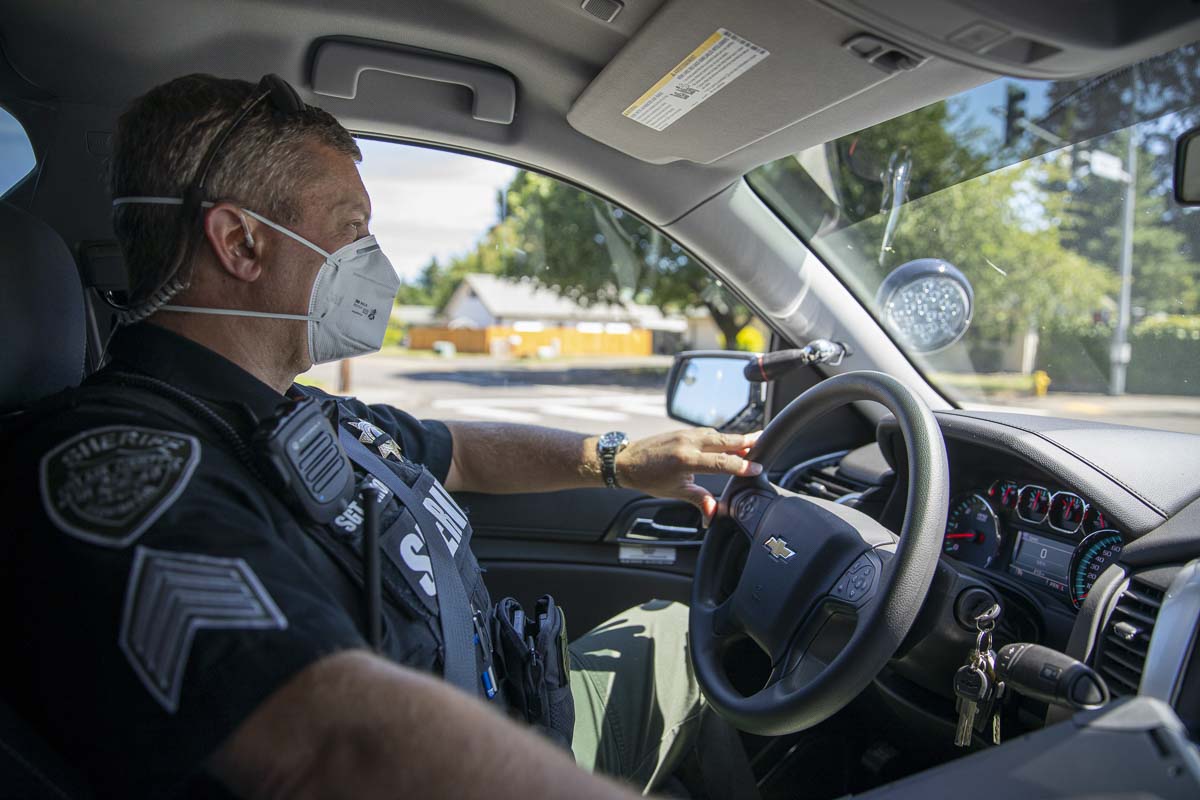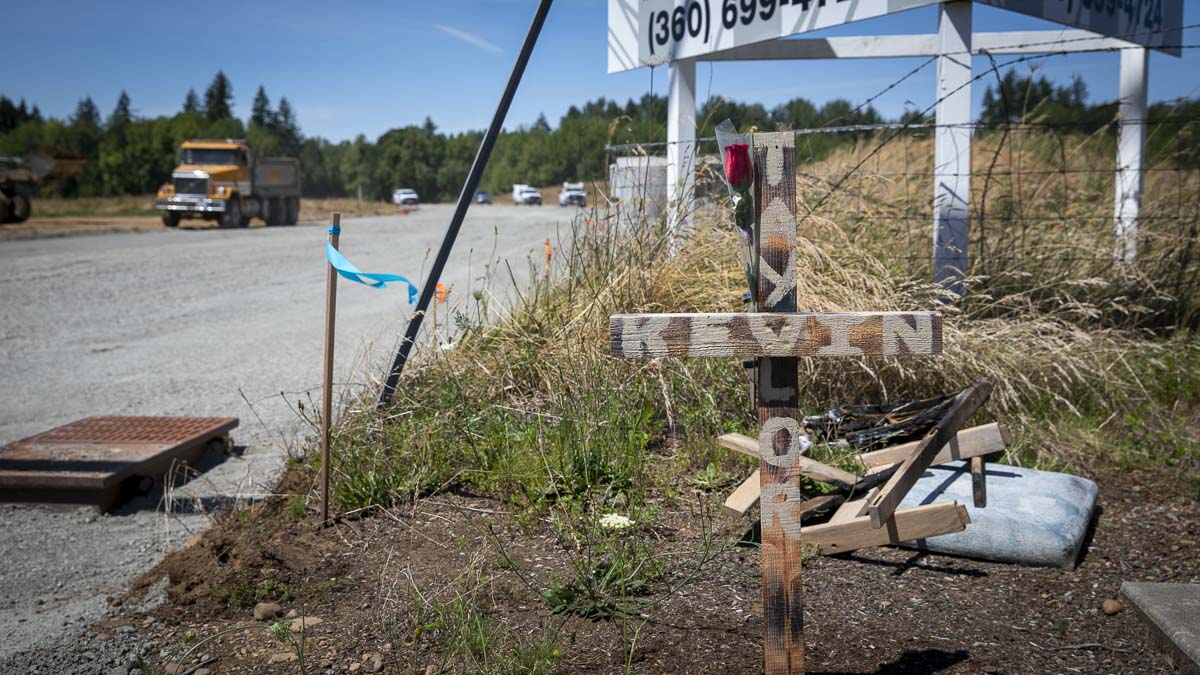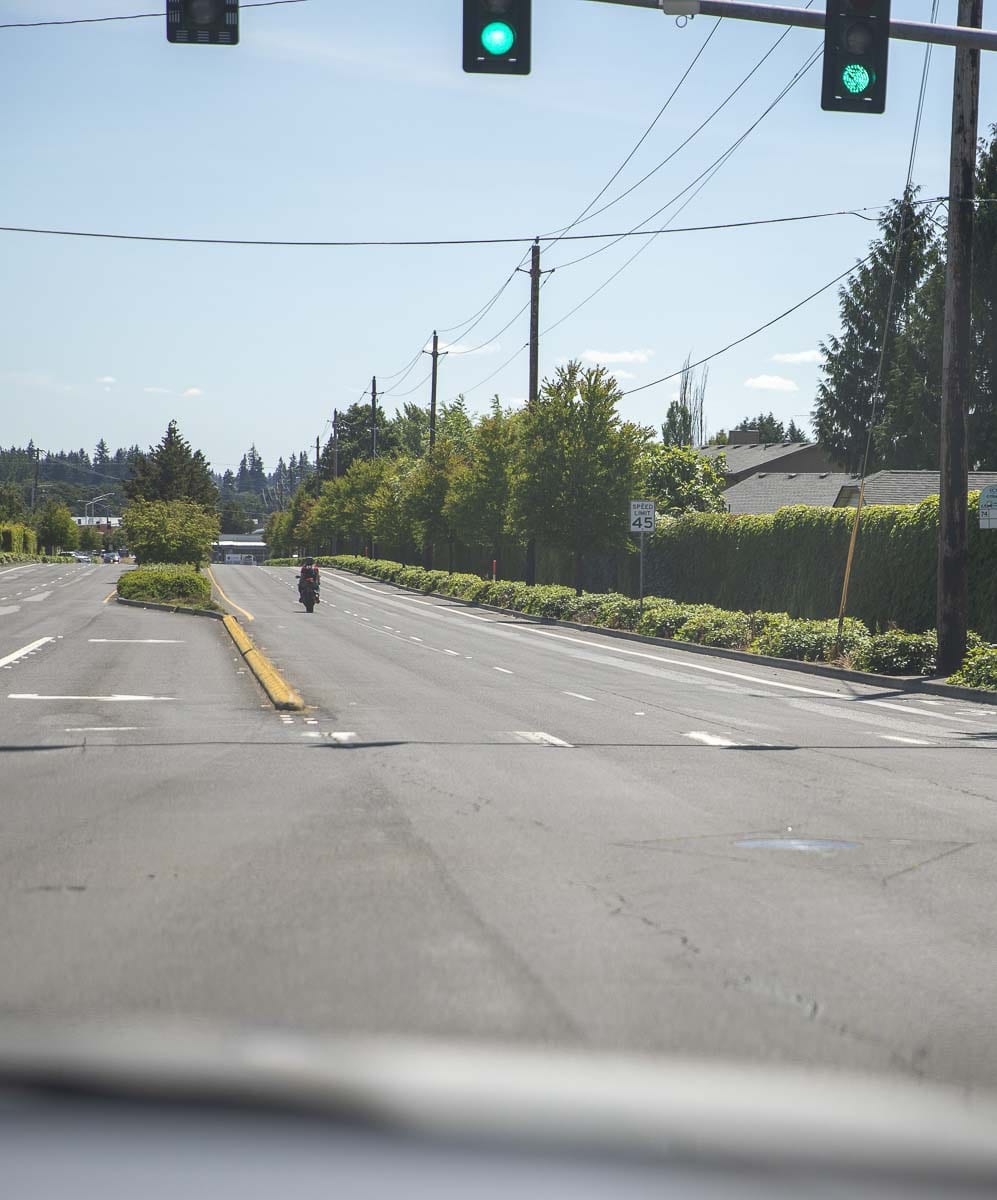Extra patrols seek to curb rider fatalities and serious crashes
CLARK COUNTY — Between Clark and Skamania Counties, seven people lost their lives on motorcycles last year, and 27 more were seriously injured. Just in the last month, 36 people have died riding in Washington state.
“The problem is on a motorcycle, you’re subject to the same laws of physics that you are in a car,” said Clark County Sheriff’s Office (CCSO) Sgt. Alex Schoening. “People try to argue with physics everyday and they lose.”
In collaboration with the Washington Traffic Safety Commission’s Target Zero program, CCSO, Washougal Police Department and other agencies are focusing extra patrols on motorcycle safety through the month of July.

Target Zero, which is a state program with the goal of eliminating traffic related fatalities in Washington by the year 2030, funds the added patrols directly by assembling the multi-agency task force. The program is funded through state grant money.
In 2019, over 90 people died in motorcycle accidents within Washington; the highest since 1982. From 2015 to 2019, motorcycles comprised a mere 3 percent of all registered vehicles, but accounted for 15 percent of traffic fatalities, according to Target Zero.
Clark County Target Zero Manager Hilary Torres and Vancouver State Farm Agent Jeremiah Stephen have teamed up to better understand and inform the local motorcyclist community about how to prevent more deaths.
“It’s [motorcycles] less expensive to purchase, less expensive to insure and operate,” Torres said. “I think that that’s really attractive. And it’s attractive to young people, young drivers, who are the least experienced. So that combination to me really came together and explained why the statistics right now are pointing toward more reckless tendencies of motorcycle riders.”
Torres also pointed out that during the summer months, more people in Southwest Washington ride than any other time of the year. Add to the mix less cars on the road because of the pandemic, and there is ample room for speeding, which is up nationally, she said.
“I used to ride a motorcycle all through college, and I didn’t take any training,” Stephen said. “I look back and say, ‘I think I probably shouldn’t be here right now because of some of the things that I did improperly.’ I feel like people who ride bikes for the most part, are going to listen to other people who ride bikes. I’m a partner with Target Zero to make people aware of their actions and the ramifications around those actions.”
During the campaign focusing on motorcycle safety, Stephen is hosting socially distanced events in the parking lot of his office in Vancouver to bring riders together and encourage them to encourage each other.
Up until two years ago in Washington, most motorcycles were not required to have insurance, much different from cars where it is illegal to be uninsured. With that change, Schoening and Stephen explained how important taking the certification courses and purchasing insurance is for riders; now more than ever.
“Death is final, you’re not coming back from that one. Even if you crash and you get hurt, what if you get hurt and you can’t work?” Stephen said. “Coming home, at the end of the day, to ride again the next day. I believe that is really the goal. The only way we can do that is if we educate ourselves, we’re safe and then we are using tools like the insurance or our safety professionals and being held accountable.”
Unfortunately, you don’t have to look far in Clark County to find the dozens and dozens of memorial sites for motorcycle riders who have died riding.
Schoening, who has worked with the Sheriff’s Office traffic unit for years, has seen his fair share of tragedies. Many of the common causes for rider fatalities may be surprising. Schoening said most of the time the rider crashes as a result of their own actions, and not circumstances.

Everything from intoxication, to speed, to failing to turn, to looking in the rearview mirror too long, are quite common. Fatal accidents occur day and night, rain or shine, Schoening said. The pattern is in the mistakes.
“The problem with riding a motorcycle is there are no restraint systems, your only protection is the gear that you’re wearing,” Schoening said. “In a sudden deceleration, sudden stop like a collision, that gear is going to have minimal effect depending on your speed.”
In fact, 75 percent of those 2019 crashes were traced back to “causal factors attributed to the motorcyclist,” according to Target Zero. Schoening, however, also points out the flipside of the same coin: Drivers failing to see riders results in fatalities as well.
Oftentimes motorcycle riders are not afforded the same advantages as drivers, because of their size. Drivers of cars are often looking for car-sized hazards and obstacles, he said, and when they accidentally turn in front of a rider, they often say “I didn’t even see them.” This doesn’t at all negate from their mistake, but it does shine light on the heavy importance of the ‘‘Look Twice’’ mentality, Schoening said.
Schoening also mentioned the common occurrence of the rider who weaves in and out of traffic, often speeding. In his experience, he said, other law-abiding riders are just as upset by this as the drivers.
“They’re as angry about it as any regular four wheel motorist because it gives them a bad name,” he said. “They’re doing their best to, you know, navigate the roadway not get turned in front of and be seen. And they have somebody that’s ruining it for them.”

The funding that allows for such extra patrols to occur is only possible through detailed reporting showing that traffic stops were made and if not, that there was a higher level of adherence to the law, Schoening explained.
Torres and Schoening also made it clear that the campaigns are not designed to single out, or ‘pick on’ motorcyclists. Rather, they are a form of education and enforcement designed to course correct dangerous attitudes towards riding, they said.
For more educational resources on safe motorcycling, visit www.itsafineline.com.




